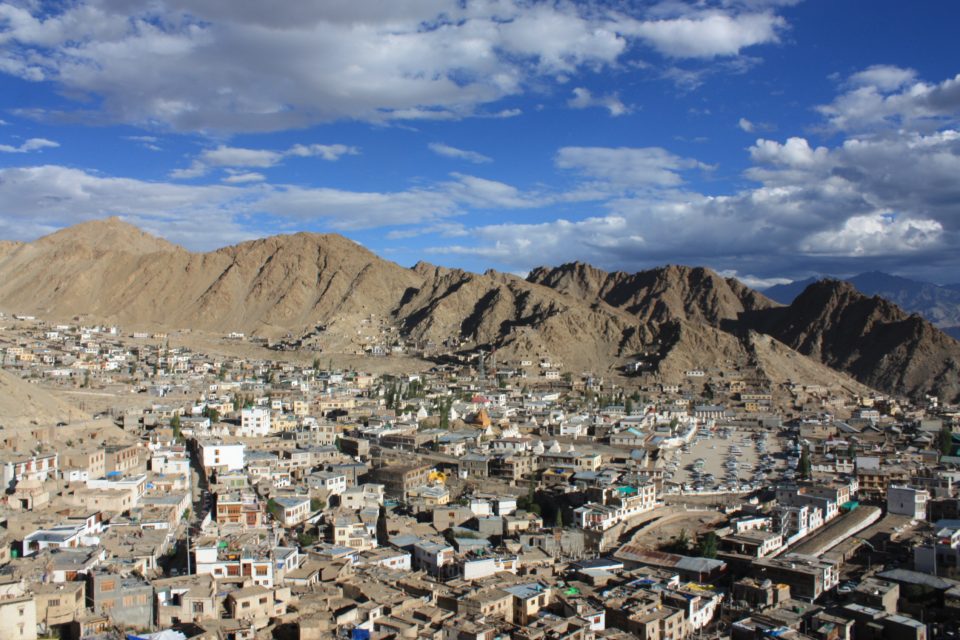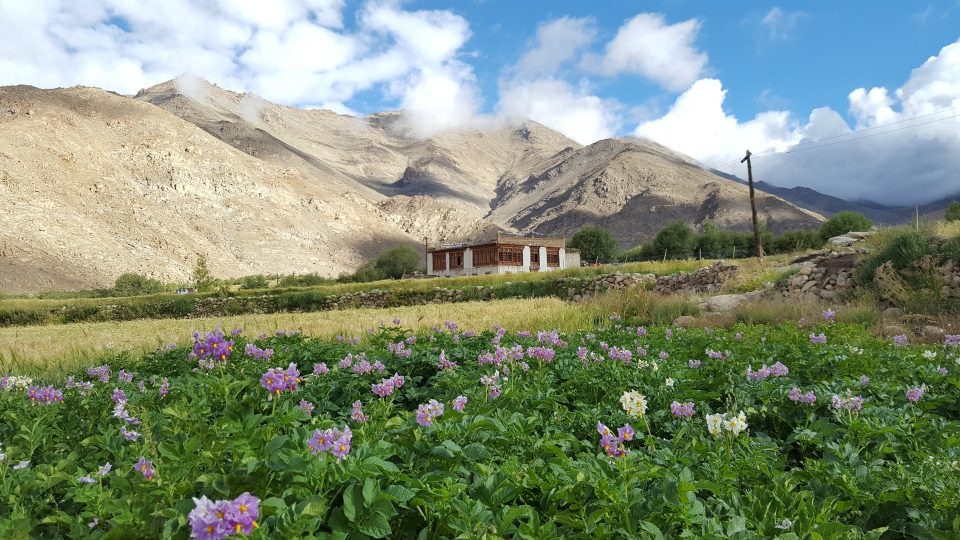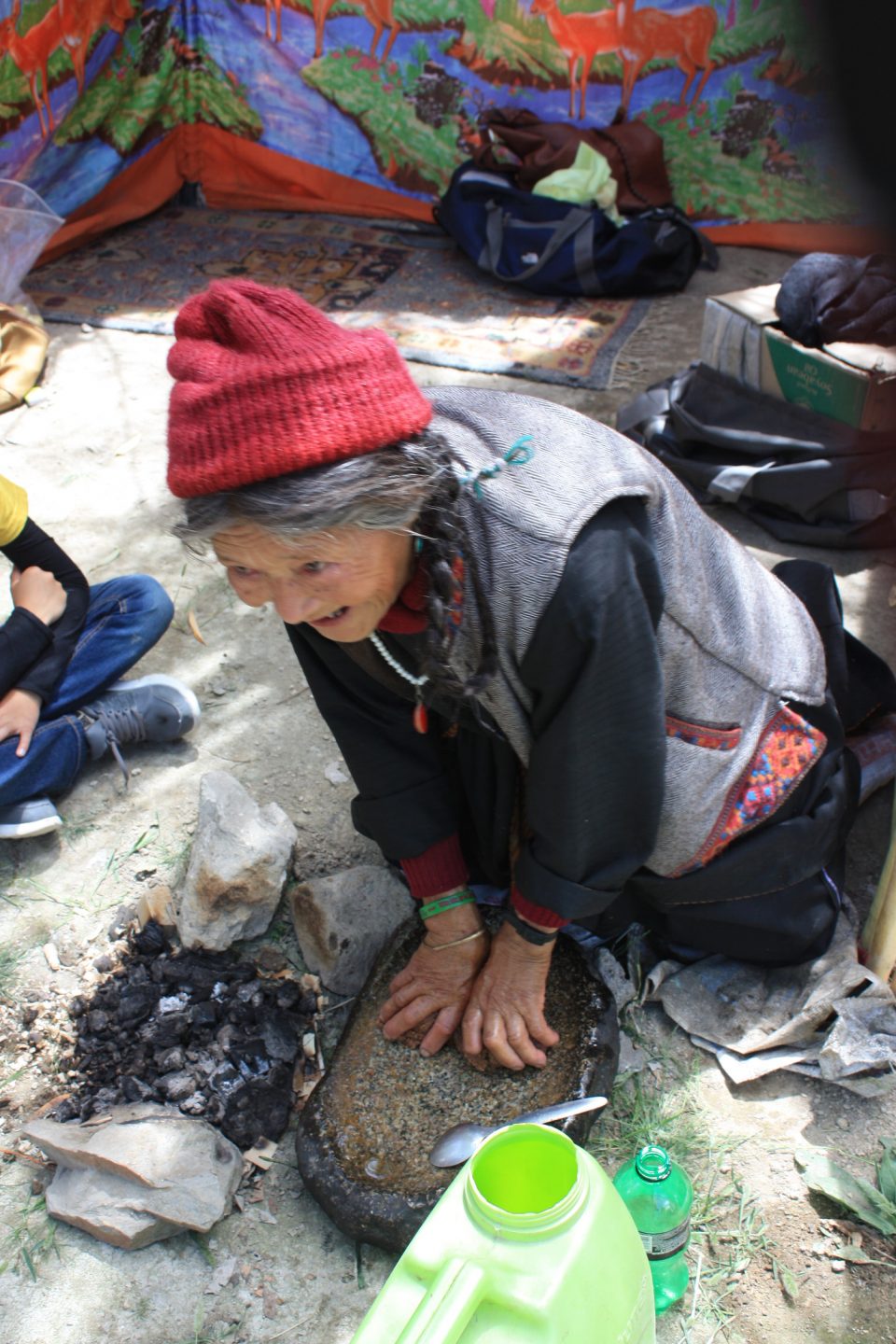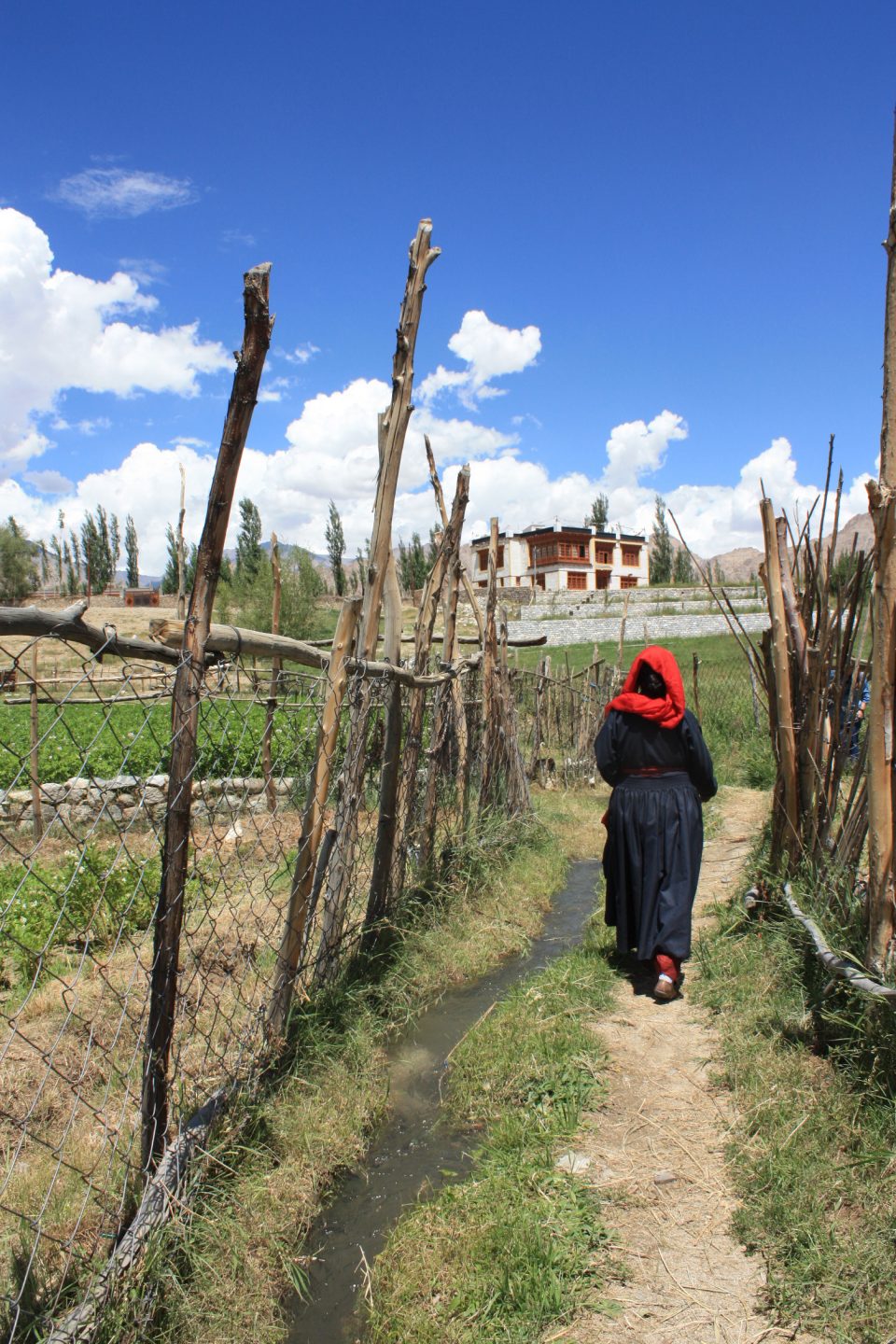I spent the second week of my Indian journey in Ladakh, a region high up in the Himalayas, in the state of Jammu and Kashmir, surrounded by China and Pakistan. The trip was organised by Navdanya and enabled an international group of 12 people to discover this region, its food and the way small scale farmers and the organisation are working together. We mainly stayed in Leh, the largest town of Ladakh, which is very touristic, the region offering beautiful trekking paths in a wonderful landscape and an interesting history with different religions and architecture styles.

The Southern part of Leh viewed from the former royal palace
We also spent two nights in a village in the mountains, where Navdanya started a relationship two years ago, encouraging its inhabitants to form a seed bank and to diminish their consumption of chemicals for fertilisation and crop protection. We were served biscuits, butter tea (salted tea with a lot of milk and butter) bread, soup, vegetable curries and also had the opportunity to cook, dance and share great moments together. The communities are very close-knit, women tend to spend a lot of time together, as most men don’t work anywhere close to home, working in major cities or in the army.

Typical Ladakhi house with surrounding barley and potato fields
In a village next to Leh, we were able to see how Navdanya gets to the communities, how important a personal contact is when the aim is to implement different ways of doing a daily routine. The main crops in Ladakh are barley, wheat, rice, potatoes and a whole variety of different herbs and vegetables. Mustard and apricot are locally grown and mostly processed into oil. Every family has a few cows, the milk is then transformed into curd (a kind of thick yoghurt), into butter or into cheese (which can be squeezy like paneer or as hard as a candy, depending on the fabrication process).
The weather in Ladakh differs from valley to valley, but is known for having tough winters. During summer time, well-functioning irrigation systems made with big rocks are being used, no machine could be seen for harvesting nor for ploughing.

Ladakhi woman pressing apricot stones in order to make oil
The main focus of Navdanya is the self-resilience of small scale farmers. Nowdays, mainly highly subsidised cash-crops are being grown. Food has to be purchased by the farmers, who don’t grow adequate food to feed themselves. The whole concept of Navdanya is to make farmers aware of the importance of feeding their family with healthy food first, and only after that to sell the surplus on local markets. The change of mind-set is a complete shift, instead of growing money food the primary produce is food. Only a small amount of land is necessary in order to grow sufficient food for a family.

Amongst vegetable fields
It was very empowering to see how Navdanya works with its communities, but also to recognise the importance of strengthening local farmers! And this can be done in any part of the World, as great food is being grown all around the planet, the nutrients are all there, simply hidden in multiple patterns and in different colours.
Namaste from Navdanya, where the weather is very humid but warm and where we learn a lot about all kinds of topics every day!

